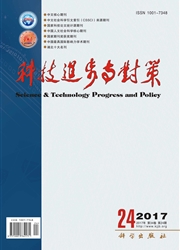

 中文摘要:
中文摘要:
运用扩展的DEA方法对长江中游城市群协同创新发展状态进行实证研究,揭示出长江中游城市群协同创新度的动态特征和变化趋势。首先从城市群协同创新度的表征因素和影响因素两个维度构建城市群协同创新评价指标,然后运用扩展的DEA方法对长江中游城市群2003-2012年间协同创新状态进行动态评估与比较分析,得出结论:长江中游城市群协同创新整体处于初级水平,10年间协同创新度均值在波动中上升,城市群内部协同创新度差距呈扩大之势;环长株潭城市群和武汉城市圈已形成中心-外围的协同创新结构,两大城市群内部协同创新度差距有扩大之势,而环鄱阳湖城市群尚未形成中心-外围结构,城市群内部协同创新度呈差距缩小之势。
 英文摘要:
英文摘要:
This article carries out an empirical analysis on the synergistic innovation development of urban agglomeration in the middle reaches of Yangtze river(UAMY)with extending DEA approach,aiming to discover dynamic characteristics and changing trend of synergy innovation degree of UAMY.Firstly,this paper explains the evaluation criterion of synergy innovation of urban agglomeration from two aspects:the performance characteristics and influencing factors.Secondly,the extending DEA is used to analyze current situation of synergy innovation of UAMY during 2003 to 2012.After the dynamic evaluation and comparative analysis,the results show that the synergy innovation of UAMY is on the primary level as a whole,the synergy innovation degree average has been fluctuant increasing during ten years,the synergy innovation gap of internal urban agglomeration is widening.Ring of Changsha,-zhuzhou,xiangtan urban agglomeration and Wuhan city circle have formed the core-periphery structure of synergy innovation,the synergy innovation gap inside the two urban agglomeration is widening.But Poyang lake urban agglomeration has not formed the core-periphery structure of synergy innovation,the synergy innovation gap inside the urban agglomeration is narrowing.
 同期刊论文项目
同期刊论文项目
 同项目期刊论文
同项目期刊论文
 期刊信息
期刊信息
